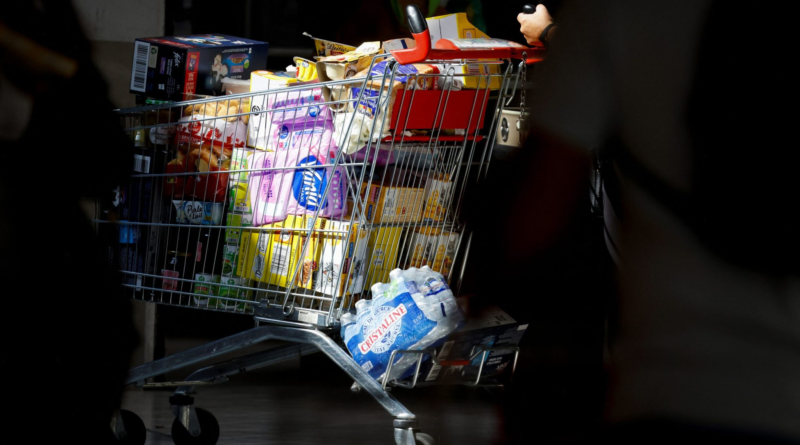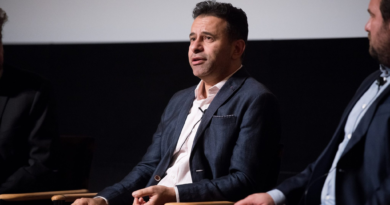Ozempic goes from threat to opportunity for packaged-food makers
Less than a year ago, the head of Novo Nordisk A/S was fielding calls from “scared” food industry executives about his company’s blockbuster drug that suppressed cravings, and survey data suggested sales could be hurt by lower consumption. Now with a better view of how the medication is affecting behavior, packaged-food companies are trying to profit off of the Ozempic craze.
Nestle SA has launched an entire product line of frozen food that specifically target those taking the drugs, known as GLP-1s. Conagra Brands Inc. is planning to highlight attributes such as protein content, which users are advised to boost during treatment. Campbell Soup Co. and Danone SA say their foods’ properties — such as being easily digestible and protein rich — will attract the cohort.
While the food industry has never met a diet trend it didn’t seek to capitalize on, GLP-1s at one point seemed to present an existential threat: the disappearance of cravings. This wasn’t just a matter of cutting down sugar or sodium content — consumers were expected to simply eat less without even trying.
The reality for food producers is turning out to be much more benign, many of them say. Even makers of cookies and snacks, whose sales often depend on spur-of-the-moment indulgences, say that their data shows that the impact on caloric intake is likely to be very limited.
“Just like everyone else, we felt nervous when those surveys came out,” said Bob Nolan, senior vice president of demand science at Conagra, which makes frozen food as well as snacks and baking products. Now, “we feel a lot better.”
Not everyone shares the outlook — Nicholas Fereday, a consumer foods senior analyst at Rabobank, said that companies can still be hurt by the trend, with snack companies in particular “more likely to be in the firing line.” But executives’ tone on the issue has shifted noticeably from a year ago.
It’s a potentially lucrative puzzle for companies to solve, given that roughly 30 million US adults have tried the drugs, according to a poll from health research organization KFF in May. About half are still taking them, the research shows.
Conagra said it’s seeing a small lift from GLP-1 users thanks to its premade Healthy Choice and Marie Callender’s meals, which are appealing because they come in single portions. Its frozen appetizers are also benefitting.
Megan Bullock, Conagra’s director of predictive science, said that frozen, individual, health-focused meals are selling better in single-person, GLP-1 user households, noting the trend is “very positive.” The analysis is now based on four quarters of behavioral data.
For now, at least, the company plans to simply highlight the attributes in their foods that GLP-1 users are likely to be looking for. “We think our current products do the job pretty well,” Nolan said, but the company can “badge” packaging to highlight protein content and other nutritional information. This will “help people connect the dots,” he said.
Since the medication decreases users’ appetite, doctors advise patients to seek out food with higher nutritional values and protein to make sure they’re getting enough even with lower calorie counts. GLP-1s can also cause stomach issues, which can be exacerbated by denser, heavier foods that are higher in fat content. Doctors also advise patients to increase their water intake while on the medications to avoid dehydration.
Nestle is selling portion-controlled frozen meals under the name Vital Pursuit, which are now available in the US. They have high protein, as well as fiber and other nutrients like calcium, iron and vitamin A. Offerings include cauliflower crust pepperoni pizza and Southwest style chicken fajita sandwich melts.
Campbell Soup Co. Chief Executive Officer Mark Clouse told investors last month that his company’s soups and snacks are “extremely well-positioned” for GLP-1 users since those consumers are looking for easily digestible, nutrient-dense foods — and even the occasional snack or cookie break. This may benefit the company’s soup business, he said, parts of which have struggled in recent years. In addition to canned soup, Campbell offers V8 vegetable juice, sippable soup cups and broths, which Clouse said are “ideal” for those taking GLP-1s such as Ozempic or Eli Lilly & Co.’s Mounjaro.
Even as portions get smaller, GLP-1 users still want to snack and indulge on occasion, Clouse said. “A handful of Goldfish to bridge a meal, a two-pack of Milanos can satisfy these moments,” he told investors.
At another event last month, Danone CEO Antoine de Saint-Affrique said GLP-1s are “good news for us,” and the perception that yogurt is a gut-healthy food means “there is an obvious overlap.”
‘Broader Trends’
After boosting their research and development spending in recent years, food companies can now move to “position their products as a complement to weight-loss treatments,” according to research from Bloomberg Intelligence analysts Jennifer Bartashus and Jibril Lawal. Packaged food makers can capitalize by emphasizing nutritional benefits that support weight-loss efforts, they wrote in a recent report. Nonetheless, companies should avoid mentioning GLP-1s on their packaging to avoid scrutiny by the Food and Drug Administration, they wrote.
Bobby Gibbs, a partner at the consulting firm Oliver Wyman that works with the food industry, said the market for healthier foods goes beyond GLP-1 users and is part of a much broader trend. At the same time, targeting GLP-1 users with healthier frozen dinners, for example, is a “genius” idea, according to Lisa Mann, an executive at Raines International Inc. who for decades worked at companies such as PepsiCo Inc. and Kind Snacks.
Even the makers of sweets and snacks, such as Pringles maker Kellanova and Oreos owner Mondelez International Inc., are saying the impact is expected to be minimal. Mark Smucker, CEO of JM Smucker Co., which recently acquired Twinkies maker Hostess Brands, said there hasn’t been a discernable effect.
“We look really hard at the GLP-1 stuff and really have found no evidence that that has made an impact,” he said.
Rabobank’s Fereday said the food industry’s latest stance doesn’t mean there aren’t still challenges.
“For a lot of the food industry, there’s the public conversation and then there’s the private conversation,” he said. “The public one is to play it down: ‘We’ve got this, our portfolio is robust enough.’”
Privately, he said, they’re saying something else: “‘I wish this would all go away.’”




